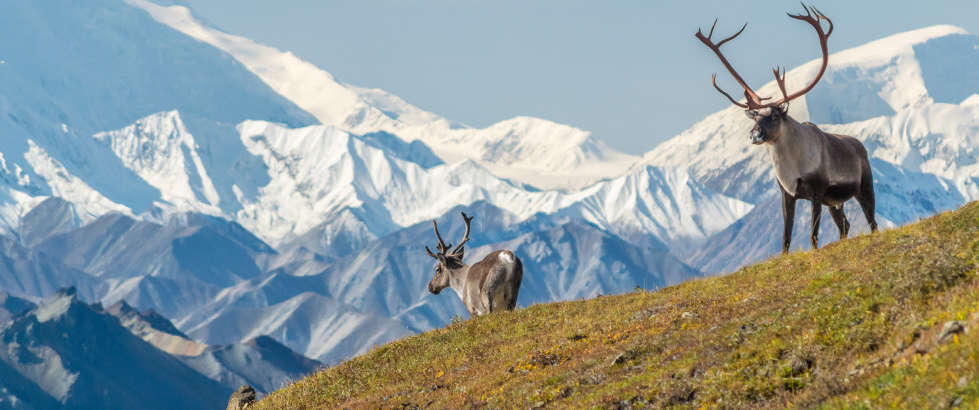
Alaska, the Last Frontier, is renowned for its breathtaking natural beauty and vast wilderness. With a population of approximately 730,000 people, it is the 48th most populated state in the U.S., reflecting its vast and sparsely populated landscape. Unlike many states, Alaska's population growth has been relatively stable, with occasional fluctuations due to its unique geographic and economic conditions. Alaska shares borders with Canada to the east and has coastlines along the Arctic and Pacific Oceans. The state is home to around 150 cities and towns, each with its own unique character and charm. The largest cities in Alaska serve as hubs of economic and cultural activity amidst the state's expansive and rugged terrain.
Living in Alaska offers a distinctive lifestyle marked by adventure and a close connection to nature. The state's low population density, the lowest in the nation, means residents can enjoy vast open spaces and a sense of solitude that is hard to find elsewhere. Despite its remote location, Alaska boasts a strong sense of community and a robust economy driven by natural resources, tourism, and fishing. Alaska's relatively stable population ensures a sustainable balance between development and preservation of its pristine environment. The AreaVibes compilation of the largest cities in Alaska, derived from the United States Census Bureau's American Community Survey, highlights the significant urban centers within this remarkable state, showcasing Alaska cities by population and their unique attributes.
| Rank | Location | Population | Area KM2 | Median Income | Livability Score |
| 1 | Anchorage | 292,090 | 4,420 | $84,813 | 77 |
| 2 | Juneau | 32,099 | 6,829 | $88,077 | 82 |
| 3 | Fairbanks | 31,427 | 82 | $64,397 | 56 |
| 4 | Badger | 19,434 | 170 | $92,872 | 57 |
| 5 | Knik-Fairview | 17,682 | 216 | $89,401 | 54 |
| 6 | College | 12,734 | 48 | $69,724 | 64 |
| 7 | Wasilla | 10,469 | 32 | $62,667 | 60 |
| 8 | Tanaina | 10,449 | 79 | $80,990 | 55 |
| 9 | Lakes | 8,944 | 33 | $84,821 | 56 |
| 10 | Sitka | 8,569 | 7,433 | $81,708 | 85 |
| 11 | Kalifornsky | 8,395 | 178 | $86,429 | 58 |
| 12 | Meadow Lakes | 8,307 | 195 | $70,069 | 50 |
| 13 | Ketchikan | 8,230 | 10 | $65,809 | 76 |
| 14 | Kenai | 7,799 | 75 | $66,612 | 55 |
| 15 | Steele Creek | 7,365 | 240 | $105,938 | 59 |
| 16 | Palmer | 7,359 | 13 | $60,156 | 73 |
| 17 | Bethel | 6,548 | 115 | $86,624 | 54 |
| 18 | Kodiak | 5,983 | 10 | $69,259 | 65 |
| 19 | Gateway | 5,965 | 56 | $105,786 | 61 |
| 20 | Chena Ridge | 5,863 | 94 | $96,838 | 58 |
| 21 | Homer | 5,830 | 36 | $61,332 | 70 |
| 22 | Sterling | 5,150 | 201 | $90,799 | 61 |
| 23 | Farmers Loop | 5,089 | 57 | $87,579 | 61 |
To compile the list of the largest cities in Alaska, AreaVibes used census data from the United States Census Bureau's American Community Survey (ACS). The American Community Survey releases updated estimates annually, offering a valuable resource for understanding the evolving dynamics within communities. These estimates are crucial for officials, community leaders, businesses, and local residents as they provide insights into demographic, economic, and social changes. By analyzing ACS data, stakeholders can make informed decisions, plan for future developments, and address the needs of their communities effectively. The detailed population information from the ACS helps track trends, allocate resources, and implement policies that enhance the quality of life for all residents.
The map above serves as an excellent tool for discovering the most and least densely populated states across the United States. By highlighting both the states with the highest and lowest population density, it offers a comprehensive view of the nation's demographic landscape. This visual representation allows users to easily compare different regions, making it a valuable resource for anyone considering relocation or investment opportunities. Living in high density states could give you access to the following benefits: additional economic opportunities, enhanced amenities, improved health care, better infrastructure and technological advancement. Less densely poupulated states on the other hand, often have a lower cost of living, reduced traffic, closer-knit communities, abundant natural spaces and lower crime rates.